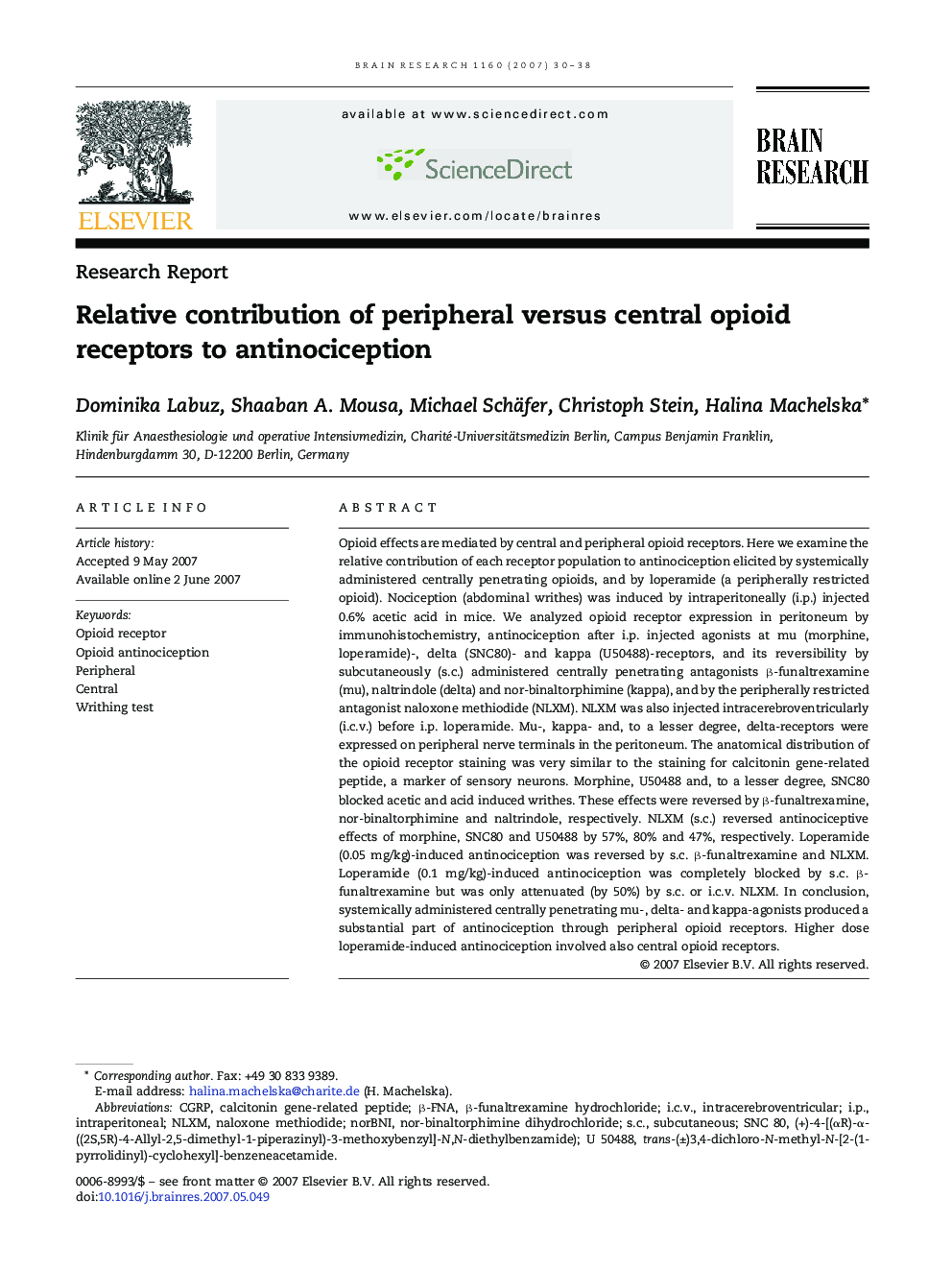| کد مقاله | کد نشریه | سال انتشار | مقاله انگلیسی | نسخه تمام متن |
|---|---|---|---|---|
| 4330876 | 1614279 | 2007 | 9 صفحه PDF | دانلود رایگان |

Opioid effects are mediated by central and peripheral opioid receptors. Here we examine the relative contribution of each receptor population to antinociception elicited by systemically administered centrally penetrating opioids, and by loperamide (a peripherally restricted opioid). Nociception (abdominal writhes) was induced by intraperitoneally (i.p.) injected 0.6% acetic acid in mice. We analyzed opioid receptor expression in peritoneum by immunohistochemistry, antinociception after i.p. injected agonists at mu (morphine, loperamide)-, delta (SNC80)- and kappa (U50488)-receptors, and its reversibility by subcutaneously (s.c.) administered centrally penetrating antagonists β-funaltrexamine (mu), naltrindole (delta) and nor-binaltorphimine (kappa), and by the peripherally restricted antagonist naloxone methiodide (NLXM). NLXM was also injected intracerebroventricularly (i.c.v.) before i.p. loperamide. Mu-, kappa- and, to a lesser degree, delta-receptors were expressed on peripheral nerve terminals in the peritoneum. The anatomical distribution of the opioid receptor staining was very similar to the staining for calcitonin gene-related peptide, a marker of sensory neurons. Morphine, U50488 and, to a lesser degree, SNC80 blocked acetic and acid induced writhes. These effects were reversed by β-funaltrexamine, nor-binaltorphimine and naltrindole, respectively. NLXM (s.c.) reversed antinociceptive effects of morphine, SNC80 and U50488 by 57%, 80% and 47%, respectively. Loperamide (0.05 mg/kg)-induced antinociception was reversed by s.c. β-funaltrexamine and NLXM. Loperamide (0.1 mg/kg)-induced antinociception was completely blocked by s.c. β-funaltrexamine but was only attenuated (by 50%) by s.c. or i.c.v. NLXM. In conclusion, systemically administered centrally penetrating mu-, delta- and kappa-agonists produced a substantial part of antinociception through peripheral opioid receptors. Higher dose loperamide-induced antinociception involved also central opioid receptors.
Journal: Brain Research - Volume 1160, 30 July 2007, Pages 30–38